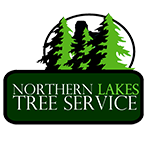Coeur d’Alene Tree Selection and Planting Site
Coeur d’Alene Urban Forestry
Coeur d’Alene is the largest city and county seat of Kootenai County, Idaho. The city looks very much like a community set within a forest of trees. It is one of the cities in North Idaho known to be an advocate of urban forestry.
The primary goal of urban forestry in Coeur d’Alene is to preserve, protect, maintain, and enlarge the city’s urban forest to optimize benefits. They believe that trees play an extensive role in metropolitan infrastructure. This program promotes community awareness about proper handling of tree populations in community settings for the purpose of improving trees.
To accomplish Urban Forestry’s objective, the city has to establish proper tree care standards for public trees, which include park trees, street trees, and trees on city-owned properties. For the community to help achieve this goal, regular tree care and maintenance should be practiced. Seeking tree care professionals is advised and highly recommended.
Tree Selection and Planting Site
A tree care specialist will help you select the right tree to be planted in the right place. They will also be the ones to educate you on factors that might affect tree selection and planting sites. To begin with, let me tell you these factors you should consider when selecting trees.
Factors to consider in tree selection and planting site
- Size. First, the homeowner should examine their yard to be able to determine the proper size of tree that will best fit their planting site. Knowledge of the mature height and spread of trees can prevent many landscape problems. This factor will vary somewhat due to soil conditions and other factors. Awareness of this factor can prevent overcrowding of trees, interference with utility wires, and other issues.
- Soil quality. One of the strongest factors in successful tree selection is soil quality. Most trees grow well and naturally in soils with a pH of 6.0 to 7.5. Soil porosity should also be considered when choosing the right tree for your planting site. This refers to the amount of pore, or open space, between soil particles. These spaces are filled with either air, other gases, or water. Large pores allow the ready movement of air and the drainage of water. Homeowners should select appropriate plants and trees for wet and dry sites.
To help homeowners determine which trees are suited for their property, they may call an arborist to examine the texture, fertility, salinity, and pH level of the soil in their yard.
- Exposure and the amount of sunlight are also considerations for tree selection. Most woody plants require full sunlight for proper growth and flowering. Some tree species prefer light shade, and few perform well in dense shade.
- Hardiness refers to the ability of plants to survive in extreme temperatures. There are some reference books that can help you distinguish locations with hardiness zones. Tolerance to summer heat and drought should also be considered. Dry weather and extreme heat can weaken your trees.
- Pest Susceptibility. Susceptibility to insects and diseases is another important factor homeowners should keep in mind. Every tree has its own particular pest problem, and the severity varies geographically. Proper selection of trees may resist life-threatening pests to your trees and plants. A local arborist can guide you to relevant information regarding pest problems at your location.
- Personal Preference. Of course, you should not set aside your own personal taste. Think of how a variety of new trees and plants can enhance the aesthetic appeal of your property. Visualize your planting area and reflect how your preferences affect your yard over time.
If you are still having a hard time selecting the right tree for the right planting site, seek out a professional tree service company that can help you loosen your burden. Call Northern Lakes Tree Service for free tree assessments in Coeur d’Alene and cities in North Idaho.
Phone: (208) 443-3600
Cell: (208) 610-3718
